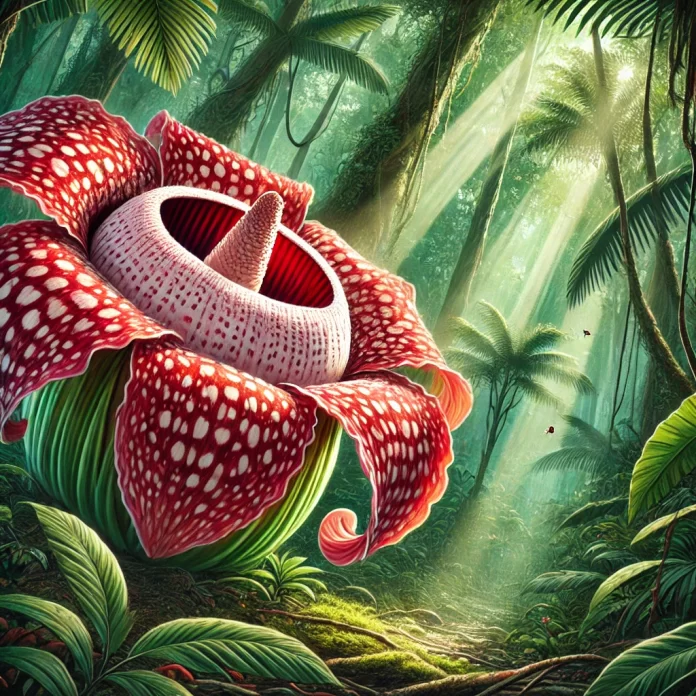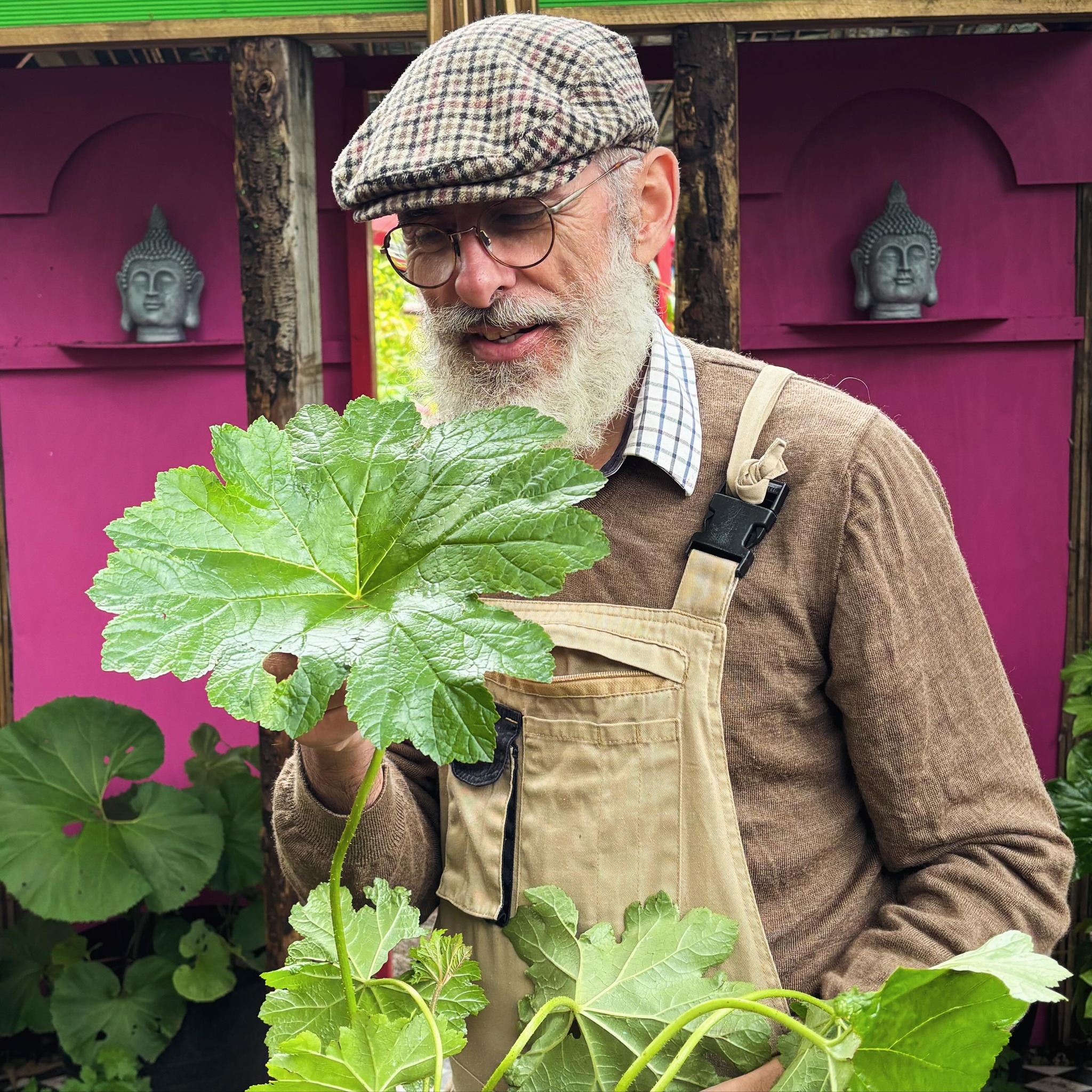Deep in the rainforests of Southeast Asia, a strange and spectacular flower blooms. It’s massive, it’s beautiful, and… it smells like a decaying carcass. Meet Rafflesia arnoldii, the world’s largest flower and nature’s own olfactory oddity. Why does it stink? How does it grow? And why should we care about its survival? Let’s find out.
What is Rafflesia arnoldii?
Imagine stumbling across a flower three feet wide and weighing up to 11 kilograms—that’s nearly the size of a small coffee table. This is Rafflesia arnoldii, also known as the corpse flower, a botanical wonder that grows only in the rainforests of Indonesia and Malaysia.
But don’t be fooled by its beauty. This flower emits a powerful stench, often compared to rotting flesh or even sewage. Why? It’s all part of a clever survival strategy, which we’ll get to in just a bit.
What’s truly fascinating is that this flower is a parasite. It doesn’t have roots, stems, or leaves. Instead, it lives entirely inside a specific host vine called Tetrastigma. The flower is the only part of the plant you’ll ever see, and when it blooms, it emerges straight out of the vine, like an alien bursting out of its host.
Lifecycle of a Giant
The lifecycle of Rafflesia arnoldii is as strange as the flower itself. It begins as microscopic filaments that burrow into the vine, stealing nutrients to survive. For months, or even years, it stays hidden, growing slowly, until one day, a small bud appears.
Now, here’s where it gets interesting. That bud grows and swells, sometimes taking months to reach the size of a cabbage. And then, it blooms. For just five to seven days, the corpse flower reveals its massive, fleshy petals, with a central disc that resembles raw meat. After that brief, glorious moment, the flower wilts and dies.
Why the Smell?
So, why does Rafflesia arnoldii smell so awful? The answer lies in its pollination strategy. Unlike most flowers that attract bees or butterflies with sweet nectar, Rafflesia relies on carrion flies—flies that feed on dead animals.
The smell of rotting meat is irresistible to these flies. And get this: the flower doesn’t just smell like decay—it also generates heat, mimicking the warmth of a decomposing carcass. The flies land on the flower, looking for a meal or a place to lay eggs, and unknowingly pick up pollen. When they visit another flower, they transfer the pollen, helping the plant reproduce.
Cultural and Scientific Significance
Rafflesia arnoldii holds a special place in Southeast Asian culture. In Indonesia, it’s called ‘Padma Raksasa,’ or ‘Giant Lotus,’ and it’s considered a national symbol of biodiversity. Its discovery in 1818 by British botanist Sir Stamford Raffles and naturalist Joseph Arnold was a major milestone in botany. That’s why it’s named after them.
But this flower isn’t just a scientific curiosity—it’s a reminder of the delicate balance of rainforest ecosystems. Conservationists are working hard to protect its habitat, as deforestation and agriculture continue to threaten its survival.
Fun Facts
Here are some fun facts about Rafflesia arnoldii to impress your friends:
- It’s not alone—there are about 28 species in the Rafflesia genus, though none are as large as this one.
- The flower’s stench is so strong, it can be detected from over 30 feet away.
- Despite its size, cultivating Rafflesia outside the wild has been nearly impossible due to its parasitic nature.
Talk about a plant with a strong sense of home!
Conservation Challenges
Rafflesia arnoldii is endangered, and for good reason. Its survival depends on intact rainforests and its specific host vine, Tetrastigma. With logging and agriculture reducing its habitat, the future of this botanical giant is uncertain.
Researchers and local communities are stepping in to help, but it’s not easy. Since Rafflesia can’t be grown in a lab or garden, protecting its natural habitat is the only way to save it.
Outro
Rafflesia arnoldii may be the stinkiest flower in the world, but it’s also one of the most fascinating. Its story is a testament to the incredible diversity of life on Earth and a reminder of the importance of conservation.
Thank you for joining me on this journey into the wild and weird world of plants. If you enjoyed this episode, don’t forget to subscribe and share it with a friend who loves nature.




